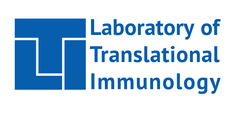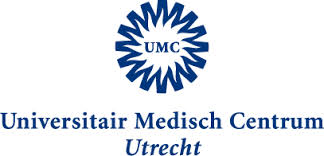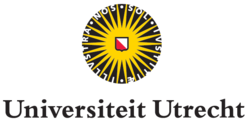
Utrecht Center for Quantitative Immunology
Identification of T cell epitopes
A human cell that is infected with virus will present protein fragments of this virus on HLA class I molecules expressed on the cell surface. Similarly, a cell taking up viral particles or proteins from the extra-cellular environment will present fragments of those on HLA class II molecules. Cytotoxic T cells (CD8+ T cells) will recognize the presented fragments on HLA class I molecules and kill the infected cells. T helper cells (CD4+ T cells) become activated after recognizing peptide-HLA class II complex, and they provide necessary environment for CD8+ T cells to perform their function.In past years, many efforts have been put in determining which peptides can be potential epitopes. For numerous peptide-MHC (pMHC) combinations the binding affinity has been measured, and this data enabled the development of highly accurate MHC binding predictors. Furthermore, the processing of precursor proteins into MHC ligands by the proteasome, other proteases and the TAP transporter has been studied extensively and data from these studies were used to construct successful processing-predictors. Our group played a central role in development of these in silico methods to predict what is being presented on the cell surface. Thanks to this progress, for a pathogen such as HIV-1 it is now possible to predict reliably which peptides will be presented on a certain MHC molecule, and test subsequently if these predicted pMHCs are epitopes.
Despite high accuracy predictions of which pMHCs are formed, what distinguishes epitopes from non-epitopes is still an open question. Several factors have been described that could explain why some pMHCs can induce T cell responses while others can not. For example, the abundance of a pMHC plays a role in immune targeting and the abundance can be affected by pMHC binding affinity and stability together with the abundance of the precursor protein and the efficiency of MHC ligand processing. However, the most important factor, we believe, is the recognition by T cells. Even when a pMHC is optimally presented, a T cell response will not occur if this pMHC complex is too similar to a self pMHC. In addition, pMHC complexes can have certain intrinsic properties that make it unlikely to be recognized by T cells. Currently, we are working on models that can predict the immunogenecity of the pMHCs using data driven approaches.
Our models for predicting different steps of the pathways involved in T cell epitope generation are made available as web servers.
Servers
Relevant Publications:
- van Rooij N, van Buuren MM, Philips D, Velds A, Toebes M, Heemskerk B, van Dijk LJ, Behjati S, Hilkmann H, El Atmioui D, Nieuwland M, Stratton MR, Kerkhoven RM, Kesmir C, Haanen JB, Kvistborg P, Schumacher TN. Tumor exome analysis reveals neoantigen-specific T-cell reactivity in an ipilimumab-responsive melanoma. J Clin Oncol. 2013 Nov 10;31(32):e439-42. doi: 10.1200/JCO.2012.47.7521.
- Calis JJ, Maybeno M, Greenbaum JA, Weiskopf D, De Silva AD, Sette A, Kesmir C, Peters B. Properties of MHC class I presented peptides that enhance immunogenicity. PLoS Comput Biol. 2013 Oct;9(10):e1003266. doi: 10.1371/journal.pcbi.1003266.
- Calis JJ, de Boer RJ, Kesmir C. Degenerate T-cell recognition of peptides on MHC molecules creates large holes in the T-cell repertoire. PLoS Comput Biol. 2012;8(3):e1002412. doi: 10.1371/journal.pcbi.1002412.
- Otten HG, Calis JJ, Kesmir C, van Zuilen AD, Spierings E. Predicted indirectly recognizable HLA epitopes presented by HLA-DR correlate with the de novo development of donor-specific HLA IgG antibodies after kidney transplantation. Hum Immunol. 2013 Mar;74(3):290-6. doi: 10.1016/j.humimm.2012.12.004
- Nielsen M, Lundegaard C, Lund O, Kesmir C. The role of the proteasome in generating cytotoxic T-cell epitopes: insights obtained from improved predictions of proteasomal cleavage. Immunogenetics. 2005 Apr;57(1-2):33-41.
- Buus S, Lauemøller SL, Worning P, Kesmir C, Frimurer T, Corbet S, Fomsgaard A, Hilden J, Holm A, Brunak S. Sensitive quantitative predictions of peptide-MHC binding by a 'Query by Committee' artificial neural network approach. Tissue Antigens. 2003 Nov;62(5):378-84. PubMed PMID: 14617044.
Members
Jose BorghansRob de Boer
Julia Drylewicz
Can Kesmir
Aridaman Pandit
Leila Perie
Kiki Tesselaar
Johannes Textor
Nienke Vrisekoop
Research
Epitope identificationLymphocyte dynamics
Lymphocyte migration
Relevance
More
UCQI homePhD students
Open positions/projects
Agenda
Publications (pubmed)


